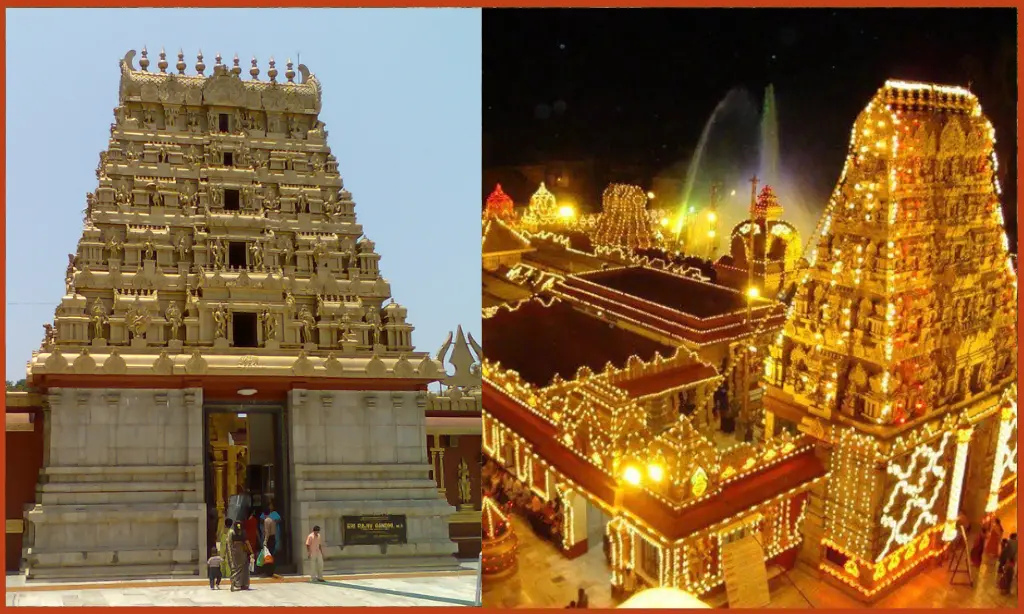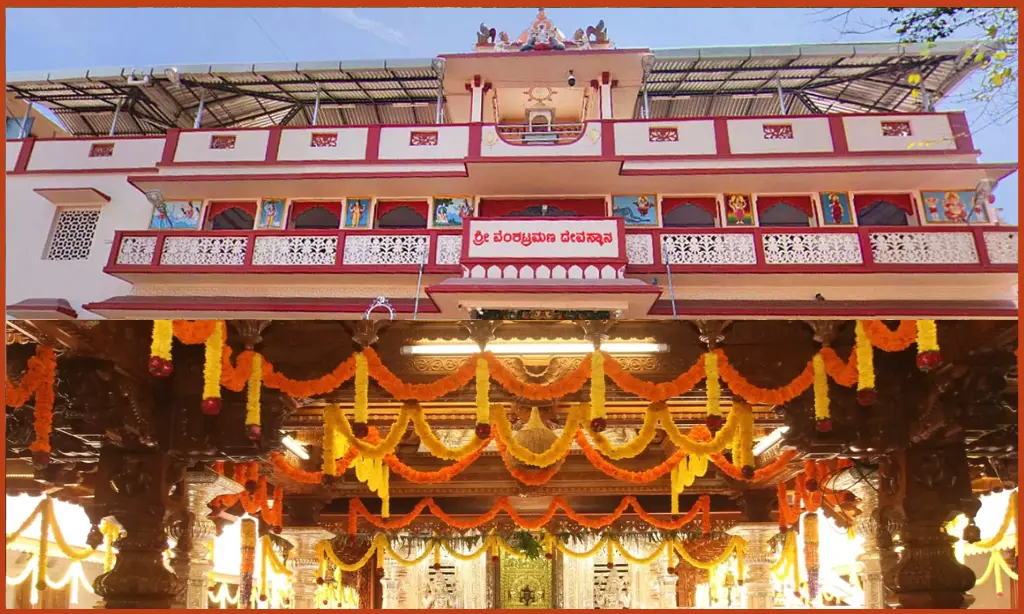Mangalore, a coastal gem in Karnataka, is not just a bustling city with a thriving economy—it is also a treasure trove of history, culture, and architectural marvels. With a history that dates back over a thousand years, Mangalore has been influenced by various dynasties, colonial powers, and local traditions. The city offers a fascinating glimpse into the past, from ancient temples and colonial churches to historic forts and vibrant markets.
In this blog, we will take you on a journey through Mangalore’s top 10 cultural and heritage sites, uncovering the stories behind these landmarks and their significance in shaping the city’s identity.
1. Mangaladevi Temple – The City’s Namesake
The Mangaladevi Temple is one of the most revered temples in Mangalore and is believed to be the reason behind the city’s name. Dedicated to Goddess Mangaladevi, this temple dates back to the 9th century and was built by the Alupa dynasty.
Why Visit?
- Architectural Splendor: The temple showcases traditional Dravidian architecture, with intricate carvings and grand sanctums.
- Religious Significance: The temple is especially crowded during Navaratri when devotees gather to seek the goddess’s blessings.
Historical Importance: It is believed that a Malabar princess named Mangaladevi, a follower of sage Matsyendranath, introduced the goddess’s worship to the region, a significant event in the city’s cultural history.Location: Bolar, Mangalore
Best Time to Visit: During Navaratri (September–October)
2. Kadri Manjunath Temple – The Oldest Shiva Temple in Mangalore
Perched atop the Kadri Hills, this temple is one of the oldest Shiva temples in South India, dating back to the 10th or 11th century. The temple is famous for its Buddhist influence, as Kadri was once a Buddhist settlement before becoming a Hindu pilgrimage site.
Why Visit?
- Ancient Bronze Idols: The temple houses one of the oldest bronze statues of Lord Manjunatha (Shiva) in South India.
- Cave Shrines: Cave structures behind the temple are believed to have been meditation spots for sages.
- Panoramic Views: The hilltop location offers breathtaking views of Mangalore’s skyline.
Location: Kadri Hills, Mangalore
Best Time to Visit: Early mornings for a peaceful experience
3. St. Aloysius Chapel – The Sistine Chapel of India
Built in 1880 by Jesuit missionaries, St. Aloysius Chapel is one of Mangalore’s most stunning churches, often compared to the Sistine Chapel in Rome for its breathtaking frescoes.
Why Visit?
- Magnificent Frescoes: The chapel’s interiors are adorned with elaborate paintings depicting scenes from the life of Jesus Christ, painted by Antonio Moscheni, an Italian artist.
- Architectural Beauty: This church is an artistic masterpiece blending European and local influences.
- Peaceful Atmosphere: It provides a serene escape from the city’s hustle and bustle.
Location: Light House Hill, Mangalore
Best Time to Visit: Morning hours when the sunlight enhances the frescoes
4. Sultan Battery – Tipu Sultan’s Coastal Fortification
Built-in 1784 by Tipu Sultan, this watchtower was designed to protect Mangalore from naval invasions by the British. Though now in ruins, Sultan Battery remains a popular heritage site.
Why Visit?
- Historical Significance: It was built as a defensive structure during the Anglo-Mysore wars.
- Scenic Views: The watchtower offers stunning views of the Arabian Sea and backwaters.
- Photography Spot: The old stone structure, surrounded by greenery and water, makes for excellent photography.
Location: Boloor, Mangalore
Best Time to Visit: Sunset for the best views
5. Rosario Cathedral – The Oldest Church in Mangalore
Established in 1568, Rosario Cathedral is the first Roman Catholic Church in Mangalore and was built during Portuguese rule.
Why Visit?
- Historical Importance: It played a significant role in the spread of Christianity in coastal Karnataka.
- Unique Dome Structure: The cathedral features a large white dome visible from many parts of the city.
- Religious Significance: It is an important pilgrimage site for Mangalore’s Christian community.
Location: Pandeshwar, Mangalore
Best Time to Visit: Christmas and Easter for the most vibrant celebrations
6. Milagres Church – A Legacy of Portuguese Rule
Built in 1680, Milagres Church is another magnificent Portuguese-era church known for its European-style architecture.
Why Visit?
- Gothic Architecture: The tall spires and stained-glass windows are breathtaking.
- Rich Heritage: The church has a museum displaying artefacts from Mangalore’s colonial past.
- Spiritual Ambiance: It is a peaceful place to reflect and admire historical craftsmanship.
Location: Hampankatta, Mangalore
Best Time to Visit: Any time of the year, but especially during festivals
7. Zeenath Baksh Masjid – A 7th-Century Islamic Landmark
Zeenath Baksh Masjid, known as Beliye Palli, is one of India’s oldest mosques. It was built by Arab traders in the 7th century.
Why Visit?
- Ancient Islamic Architecture: The mosque is built in Kerala-style wooden architecture, a rarity for Islamic structures.
- Rich Heritage: It is said to have been visited by Malik Dinar, one of the first propagators of Islam in India.
- Religious Harmony: It symbolises Mangalore’s multi-religious
Location: Bunder, Mangalore
Best Time to Visit: Anytime, but especially during Ramadan
8. Pilikula Nisargadhama – A Glimpse into Coastal Karnataka’s Traditions
A sprawling heritage village, Pilikula Nisargadhama is a living museum showcasing Karnataka’s traditional culture, crafts, and lifestyles.
Why Visit?
- Guthu Mane (Traditional House): A beautifully restored heritage home depicting the Tuluva lifestyle.
- Folk Arts & Crafts: Experience Yakshagana, Kambala (buffalo race), and pottery.
- Nature Park & Zoo: Home to diverse wildlife and lush gardens.
Location: Vamanjoor, Mangalore
Best Time to Visit: Winter months (November–February) for a comfortable experience
9. Kudroli Gokarnath Temple – A Modern Marvel with Deep Roots

Kudroli Gokarnath Temple
Built in 1912 by Narayana Guru, this temple symbolises social equality, allowing worshippers of all castes to enter.
Why Visit?
- Unique Golden Gopuram: A stunning golden tower (Gopuram) resembling Tamil Nadu’s grand temples.
- Grand Dasara Festival: The temple is decorated with lights, processions, and cultural programs during Dasara.
- Serene Environment: The temple complex includes fountains, gardens, and artistic sculptures.
Location: Kudroli, Mangalore
Best Time to Visit: Dasara Festival (September–October)
10. Carstreet Venkataramana Temple – A 300-Year-Old Heritage Site

Carstreet Venkataramana Temple
Located in Carstreet, this Udupi-style temple is one of Mangalore’s most visited Vaishnavite temples.
Why Visit?
- Rathotsava (Chariot Festival): The annual Car Festival is a spectacular religious event.
- Dravidian Architecture: Beautifully carved wooden pillars and sanctum.
- Historical Significance: A centre for the Gowda Saraswat Brahmin community for centuries.
Location: Car Street, Mangalore
Best Time to Visit: During Rathotsava (Chariot Festival)
Conclusion
Mangalore’s heritage sites reflect its rich history, cultural diversity, and architectural brilliance. Whether you’re a history buff, a spiritual seeker, or a travel enthusiast, these landmarks offer a captivating glimpse into the city’s past and present.









